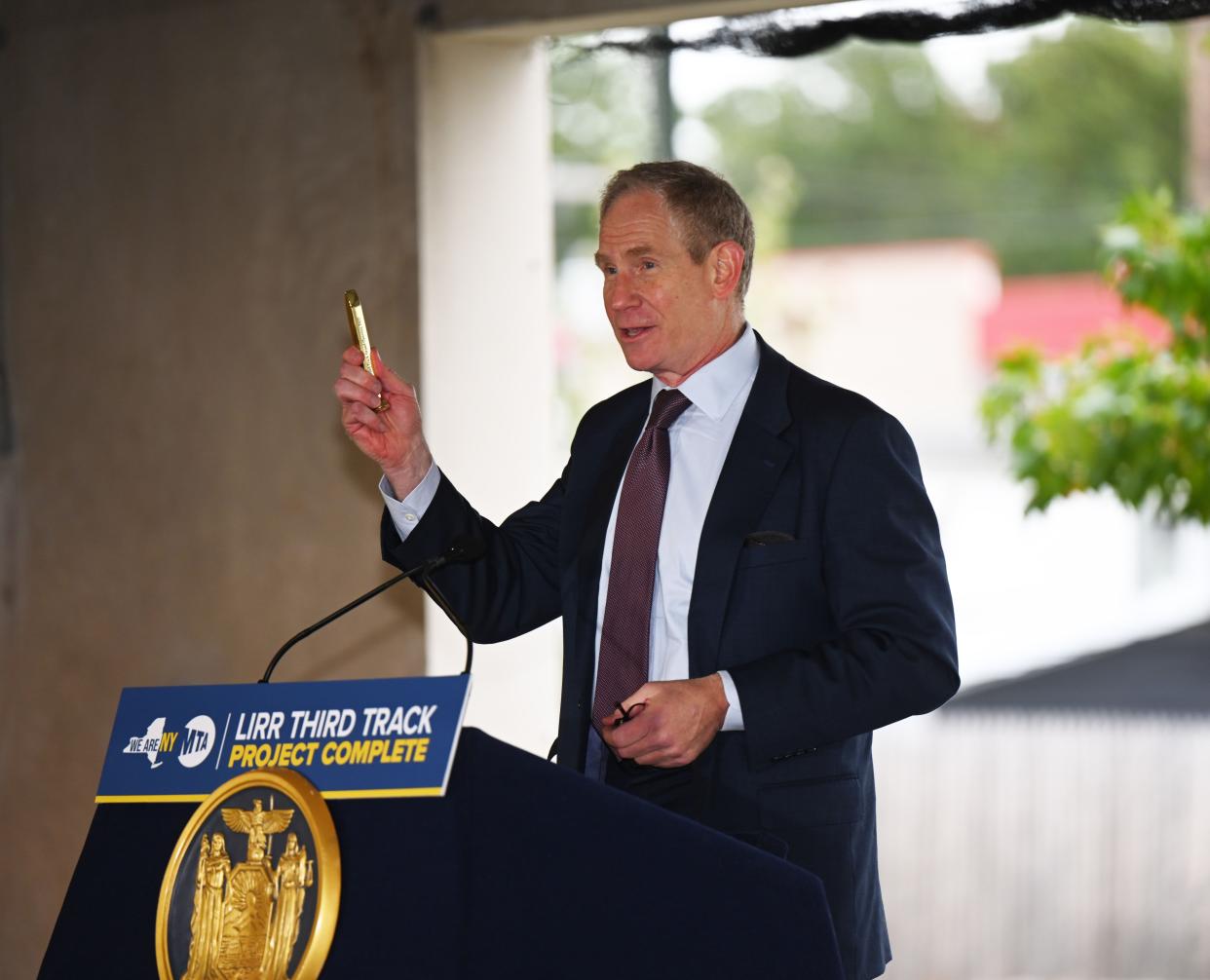MTA wraps long-planned LIRR third track project, eliminating key transit bottleneck
After decades of planning, the MTA on Monday finally finished the Long Island Rail Road’s third track project that eliminates one of New York’s most cumbersome mass transit bottlenecks.
The project adds a new 9.8-mile express track between the Floral Park and Hicksville stations, which enables new express service on LIRR trains in and out of Jamaica Terminal as well as more trains for reverse commuters.

The project adds a new 9.8-mile express track between Floral Park and Hicksville stations, which enables new express service on LIRR trains in and out of Jamaica Terminal as well as more trains for reverse commuters. (Kevin P. Coughlin/)
“This is a new chapter in Long Island Rail Road history,” Metropolitan Transportation Authority chairman Janno Lieber said during a news conference. “It’s time that we grow service as we are trying to fight climate change. ... We need to make mass transit the first choice, not just a second or inferior option.”
Riders won’t see the additional service created by the new track until December, when the LIRR’s long overdue East Side Access station is scheduled to open beneath Grand Central Terminal. MTA officials plan to boost LIRR service once the new station opens — and divert some trains from Penn Station to the new station, which Gov. Hochul in May renamed “Grand Central Madison.”

“This is a new chapter in Long Island Rail Road history,” Metropolitan Transportation Authority chairman Janno Lieber said during a Monday news conference. (Kevin P. Coughlin/)
New York officials first pitched a version of the third track project in the 1940s. The MTA in 2005 began an environmental review as an early step to apply for federal funding for the project. But transit officials halted the process in 2008 as the agency faced a dire financial crisis.
The third track concept was resurrected in the mid-2010s under former Gov. Andrew Cuomo, and MTA officials in late 2017 moved forward with the project without federal funding and at a higher cost.
Transit officials in 2008 estimated the project would cost $1.5 billion, or about $2.1 billion in 2022 money when adjusted for inflation. The realized version of the project came in at $2.48 billion, about $100 million less than the budget approved by the MTA board.

Governor Kathy Hochul, MTA Chair & CEO Janno Lieber, Metro-North President and Interim Long Island Rail Road President Catherine Rinaldi, SMART General Chair Anthony Simon, and 1199SEIU home health aide Robin Allen ride a ceremonial train from Hicksville to Westbury on Monday, Oct 3, 2022, commemorating the completion of the LIRR Third Track project, running from Floral Park to Hicksville. (Kevin P. Coughlin/)
In addition to building a new track, MTA contractors also installed sound barriers, replaced seven bridges and eliminated eight grade crossings where motorists had to wait for trains to pass.
MTA officials said some construction on the project will continue until April, including some work on the Mineola station and other “punch list” items.
“We’re building the future right here and it’s a huge, huge milestone for commuters and visitors alike,” Gov. Hochul said of the project.
